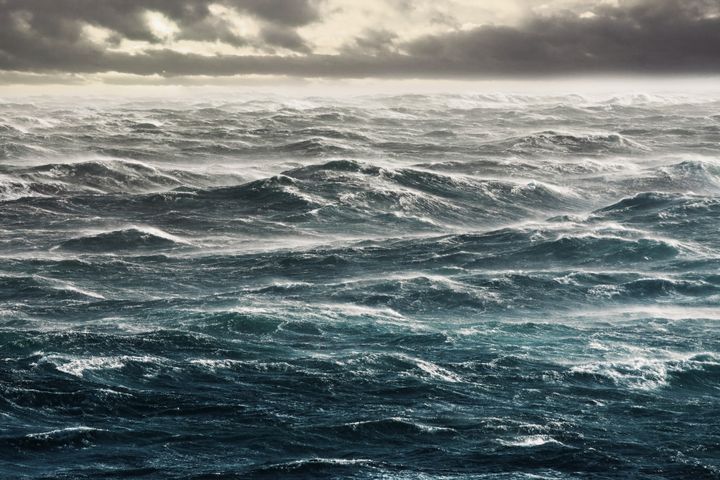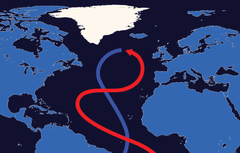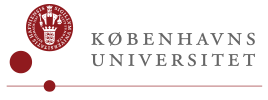Gloomy climate calculation: Scientists predict a collapse of the Atlantic ocean current to happen mid-century
Important ocean currents that redistribute heat, cold and precipitation between the tropics and the northernmost parts of the Atlantic region will shut down around the year 2060 if current greenhouse gas emissions persist. This is the conclusion based on new calculations from the University of Copenhagen that contradict the latest report from the IPCC.

Contrary to what we may imagine about the impact of climate change in Europe, a colder future may be in store. In a new study, researchers from the University of Copenhagen’s Niels Bohr Institute and Department of Mathematical Sciences predict that the system of ocean currents which currently distributes cold and heat between the North Atlantic region and tropics will completely stop if we continue to emit the same levels of greenhouse gases as we do today.
Using advanced statistical tools and ocean temperature data from the last 150 years, the researchers calculated that the ocean current, known as the Thermohaline Circulation or the Atlantic Meridional Overturning Circulation (AMOC), will collapse – with 95 percent certainty – between 2025 and 2095. This will most likely occur in 34 years, in 2057, and could result in major challenges, particularly warming in the tropics and increased storminess in the North Atlantic region.
"Shutting down the AMOC can have very serious consequences for Earth's climate, for example, by changing how heat and precipitation are distributed globally. While a cooling of Europe may seem less severe as the globe as a whole becomes warmer and heat waves occur more frequently, this shutdown will contribute to an increased warming of the tropics, where rising temperatures have already given rise to challenging living conditions," says Professor Peter Ditlevsen from the Niels Bohr Institute.
"Our result underscores the importance of reducing global greenhouse gas emissions as soon as possible," says the researcher.
The calculations, just published in the renowned scientific journal, Nature Communications, contradict the message of the latest IPCC report, which, based on climate model simulations, considers an abrupt change in the thermohaline circulation very unlikely during this century.
Early warning signals present
The researchers' prediction is based on observations of early warning signals that ocean currents exhibit as they become unstable. These Early Warning Signals for the Thermohaline Circulation have been reported previously, but only now has the development of advanced statistical methods made it possible to predict just when a collapse will occur.
The researchers analysed sea surface temperatures in a specific area of the North Atlantic from 1870 to present days. These sea surface temperatures are "fingerprints” testifying the strength of the AMOC, which has only been measured directly for the past 15 years.
"Using new and improved statistical tools, we’ve made calculations that provide a more robust estimate of when a collapse of the Thermohaline Circulation is most likely to occur, something we had not been able to do before," explains Professor Susanne Ditlevsen of UCPH’s Department of Mathematical Sciences.
The thermohaline circulation has operated in its present mode since the last ice age, where the circulation was indeed collapsed. Abrupt climate jumps between the present state of the AMOC and the collapsed state has been observed to happen 25 times in connection with iceage climate. These are the famed Dansgaard-Oeschger events first observed in ice cores from the Greenlandic ice sheet. At those events climate changes were extreme with 10-15 degrees changes over a decade, while present days climate change is 1.5 degrees warming over a century.
*
Facts:
- The Atlantic Meridional Overturning Circulation (AMOC) is part of a global system of ocean currents. By far, it accounts for the most significant part of heat redistribution from the tropics to the northernmost regions of the Atlantic region – not least to Western Europe.
- At the northernmost latitudes, circulation ensures that surface water is converted into deep, southbound ocean currents. The transformation creates space for additional surface water to be moved northward from equatorial regions. As such, thermohaline circulation is critical for maintaining the relatively mild climate of the North Atlantic region.
- The work is supported by TiPES, a joint-European research collaboration focused on tipping points of the climate system. The TiPES project is an EU Horizon 2020 interdisciplinary climate research project focused on tipping points in the climate system.
- Furthermore, funding was provided by Novo Nordisk Foundation; and European Union’s Horizon 2020 research and innovation program under the Marie Skłodowska-Curie grant agreement, “Economic Policy in Complex Environments (EPOC).
Keywords
Contacts
Susanne DitlevsenProfessorDepartment of Mathematical Sciences, University of Copenhagen
Tel:+45 41 12 77 89susanne@math.ku.dkPeter DitlevsenProfessorNiels Bohr Institute, University of Copenhagen
Tel:+45 28 75 06 03pditlev@nbi.ku.dkKristian Bjørn-HansenJournalist and Press ContactFaculty of Science, Copenhagen University
Tel:+45 93516002kbh@science.ku.dkMichael Skov Jensen
Tel:+45 93 56 58 97msj@science.ku.dkImages

Links
About SCIENCE
The Faculty of Science at the University of Copenhagen – or SCIENCE – is Denmark's largest science research and education institution.
The Faculty's most important task is to contribute to solving the major challenges facing the rapidly changing world with increased pressure on, among other things, natural resources and significant climate change, both nationally and globally.
Subscribe to releases from Københavns Universitet - Det Natur- og Biovidenskabelige Fakultet
Subscribe to all the latest releases from Københavns Universitet - Det Natur- og Biovidenskabelige Fakultet by registering your e-mail address below. You can unsubscribe at any time.
Latest releases from Københavns Universitet - Det Natur- og Biovidenskabelige Fakultet
Nyt studie peger på Skagerrak som et slags ”fritidshjem” for den gådefulde grønlandshaj9.7.2025 09:00:00 CEST | Pressemeddelelse
Grønlandshajen – verdens længstlevende hvirveldyr – forbindes oftest med kolde arktiske vande. Et nyt internationalt studie ledt af forskere fra Grønlands Naturinstitut og Københavns Universitet viser dog, at Skagerrak sandsynligvis fungerer som opvækstområde for unge grønlandshajer. Studiet peger også på at grønlandshajer slet ikke fødes i hverken Grønland eller andre steder i Arktis.
Old aerial photos give scientists a new tool to predict sea level rise3.7.2025 08:00:00 CEST | Press release
Researchers from the University of Copenhagen have gained unique insight into the mechanisms behind the collapse of Antarctic ice shelves, which are crucial for sea level rise in the Northern Hemisphere. The discovery of old aerial photos has provided an unparalleled dataset that can improve predictions of sea level rise and how we should prioritise coastal protection and other forms of climate adaptation.
Gamle luftfotos giver forskere nyt redskab til at forudsige havstigninger3.7.2025 08:00:00 CEST | Pressemeddelelse
Forskere fra Københavns Universitet har fået unik adgang til at forstå mekanismerne bag antarktiske ishylders kollaps, som er afgørende for havstigninger på den nordlige halvkugle. Et fund af gamle luftfotos har skabt et enestående datasæt, som kan forbedre vores forudsigelser af hvor meget havene stiger, og vores prioritering af kystsikring og andre klimatilpasninger.
Ny institutleder på IFRO: ”Faglighed og fællesskab går hånd i hånd”1.7.2025 10:49:17 CEST | Pressemeddelelse
Per Svejstrup er fra 1. august ansat som institutleder på Institut for Fødevare- og Ressourceøkonomi (IFRO). Den kommende leder træder ind i rollen med stor respekt for IFRO's faglige og kollegiale kultur med klare ambitioner for fremtiden.
Dangerous Variant of Salmonella Still Not Eradicated – Researchers Point to the Solutions1.7.2025 09:53:23 CEST | Press release
The infectious and multi-resistant cattle disease Salmonella Dublin can be fatal to both humans and animals and causes significant losses for farmers. Although Denmark has attempted to eradicate the disease since 2008, it has not yet succeeded. A study from the University of Copenhagen points to possible reasons – and the necessary solutions.
In our pressroom you can read all our latest releases, find our press contacts, images, documents and other relevant information about us.
Visit our pressroom